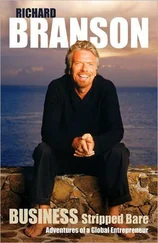Until recently I felt, as many people do, that the war on drugs was the best policy for our society. But I changed my mind soon after joining the UN Global Commission on Drug Policy along with former UN Secretary-General Kofi Annan, Javier Solana, the European Union’s former foreign policy chief, former Brazilian President Fernando Cardoso, and many others. Our findings clearly show that the global war on drugs has been nothing short of a well-intentioned but incredibly expensive mistake.
Our commission found that in countries where drug addiction was decriminalised and instead treated as a public health problem, there were decreases in crime, decreases in the number of addicts and improvements in overall public health.
Portugal, for instance, decriminalised the use and possession of drugs in 2001 and has not sent one person to prison in the last 10 years. By setting up clinics where heroin users have access to needles and methadone, along with medical treatment for addiction (which is much cheaper and more effective than prison), Portugal reduced its number of users, especially among young people and addicts. The number of new cases of HIV (from dirty needles) was down by 70 per cent between 2000 and 2009, and, as an interesting side benefit, researchers also reported a significant reduction in household burglaries.
As we assess new businesses opportunities, our team at Virgin often looks at what works in different countries, studying how we can adapt successful approaches to new markets. In the case of the drug war, our commission has shown that the key is to switch to ‘harm-reduction’ strategies. One of the more telling studies looked at the situation in Switzerland, which switched from a law and order approach to public-health-focused policies in the eighties and nineties.
According to research by the University of Lausanne: ‘Heavily engaged in both drug dealing and other forms of crime, [hardcore problematic users] served as a link between wholesalers and users. As these hard-core users found a steady, legal means for their addiction, their illicit drug use was reduced as well as their need to deal in heroin.…By removing local addicts and dealers, Swiss casual users found it difficult to make contact with sellers.’ The addicts, who are often both users and low-level dealers, but whose need had been reduced by medically prescribed heroin, had been the crucial link between suppliers and casual users.
Imagine that in your country addicts are not being jailed but treated at clinics. Imagine that their numbers are declining. That police departments have ended their efforts to round up low-level dealers and some of those officers are now focusing on organised (and random) crime. Many have been freed up to work on community policing, because even petty crime by addicts is on the decline. Imagine that the additional public funds are being spent on health and social programmes rather than on law enforcement and prisons. That, just like when Prohibition was ended in the United States, the black market has dried up and the drug gangs have withered away. Imagine that money and power are no longer associated with drugs and crime, and the media, and even our culture, are changing in response.
How do we take a stand against crime? By treating drug use as a health problem not a criminal problem. By eliminating the drug dealers’ connections to their markets. So let’s pull the plug – and save lives. As business people, if one of our policies is failing we will cut our losses quickly and change tack. It’s extraordinary that governments continue to pursue the same, failed policies, decade after decade, with all the misery these policies inflict.
SCIENCE: THE LAST FRONTIER
A nymph in Atlantis
As a kid I read Jules Verne’s Twenty Thousand Leagues Under the Sea and was enraptured by its sense of adventure and mystery. Since then I have spent a lot of time with oceans – floating over them (and occasionally crashing into them) in balloons, and speeding over them – but little time actually under them.
More than two-thirds of the Earth’s surface is covered by water, and yet humankind has hardly explored the vast expanse of saltwater that surrounds us. The wonders of space have been charted in far greater detail.
Countries such as the United States have invested trillions of dollars in searching out faraway planets and solar systems. We can land on the moon and circle the world in a space station, but we still lack the capability to reach the deepest parts of the ocean or withstand the immense pressure that such a dive would entail. There is no sign that things will change any time soon as governments remain relatively uninterested in deep-sea exploration..
The deepest a modern submarine can go is 22,000 feet below the surface, and yet there are trenches in the Pacific that are more than 37,000 feet deep. To make such a journey – going deeper than the height of Mount Everest – we need significant technological breakthroughs in materials and design. The filmmaker James Cameron set a new world record in March 2012 diving 5.1 miles beneath the ocean waves in his submarine Deepsea Challenger.
Only two private companies are seriously researching these futuristic submarines – ourselves and James Cameron. James’ craft is very heavy and can go up and down to capture samples. Ours has much greater manoeuvrability and will be able to explore for miles. The two crafts compliment each other perfectly and we are discussing embarking on adventures together. It is a classic Virgin venture, full of adventure, fun and the desire to establish a new market.
Every great adventure begins with that first step and ours has taken the form of the Necker Nymph, a new three-man sub based at my Necker Island home in the British Virgin Islands. The Nymph has been designed especially for us, and it will ‘fly’ to about 130 feet below the ocean’s surface – performing twists and turns. Submarines like the Nymph will allow a passenger to track and view the wonders of the ocean without having to be a trained diver.
Much of the best ocean viewing is 100 feet down. The amazing Nymph can dive and loop like a plane and will allow our passengers to keep up with turtles, dolphins, whales and giant spotted eagle rays – like the one I saw recently while swimming off the beach on Necker.
Granted, 130 feet is just a little shy of 36,000 feet but it’s a start, giving mere mortals, not Navy Seals or scientists, a first chance to begin exploring the underwater world. In time the Nymph will be followed by new generations of subs able to get w-a-a-y down, further than we’ve ever been before.
In conversations with many of our Virgin Galactic customers, who are planning to go into space, I have found another common interest: exploring the oceans’ uncharted waters. Most are as intrigued as I am by the dark depths.
I believe we can learn a lot from these voyages. We will find new species and better understand the make-up of the deep-level waters. We will also be able to monitor and track more accurately man’s destruction of certain areas. To organise an effective campaign to preserve our planet, we must learn how our actions affect the oceans and how quickly we are destroying them.
The oceans were rich with life when I was a child but, sadly, are much less so today. We need to treat them with respect and nurture the life there. Good farmers understand the land and the need to leave certain fields fallow so that they can be replenished. The same goes for oceans and sea life. I have been told that the pirates off the coast of Somalia have had an interesting impact on the waters they call home. I am not advocating piracy as a solution, but these ‘rubber-boat-buccaneers’ have scared off the deep-sea fishermen, allowing the surrounding waters to be replenished with a wide variety of sea life. It will be interesting to see if the impact of overfishing can be detected by our fleet of new submarines in deeper parts of the ocean.
Читать дальше












